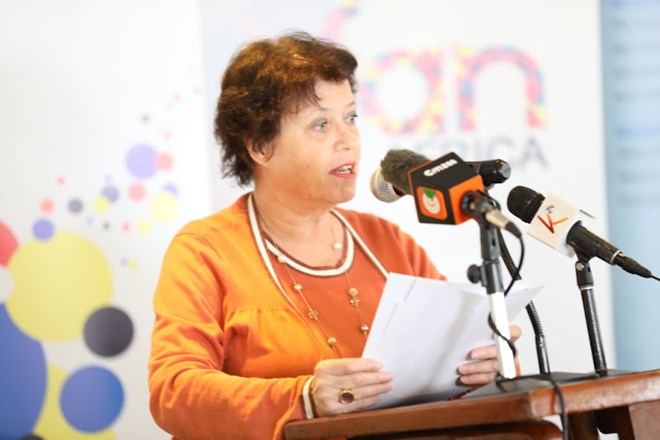
by MAGDALINE SAYA
REPORTER
Saturday September 10, 2022

CLIMATE CHANGE; Ambassador of France to Kenya and Somalia Aline Kuster-Ménage. Image: MAGDALINE SAYA
The fight against malaria might soon be hampered by the growing burden of climate change unless immediate action is taken.
Health experts have warned that the long term shift in temperature and weather patterns might ease the transmission of infections and increase the frequency of severe cases.
Human activities have been the main drivers of climate change primarily due to the burning of fossil fuels such as coal which produces heat trapping gases.
Despite the country making progress in combating malaria, the disease remains one of the most serious challenges to health.
Ambassador of France to Kenya and Somalia Aline Kuster-Menager said that, even though Kenya has showed willingness in building a better health system in the past last years, climate change is a reality
She said that these changes will have an impact on the ecology of malaria, as well as on the life conditions of many Kenyans.
According to the official, the major impact of the Covid-19 crisis calls for additional investments if the country wants to achieve SDG 3.3 that seeks to end HIV, tuberculosis and malaria epidemics by 2030.
“Women status and women education are core long-term determinants of the three pandemics and more broadly of the health status of children and pregnant women,” the ambassador said.
“Educated women are more able to prevent and manage health issues and to build a balanced family.”
The UN, on the other, hands said climate change greatly influences the El Nino cycle that is known to be associated with increased risks of some diseases transmitted by mosquitoes, such as malaria, dengue and Rift Valley fever.
In dry climates, heavy rainfall can provide good breeding conditions for the mosquitoes.
Increased humidity and droughts may turn rivers into strings of pools, the preferred breeding sites of mosquitos while in some areas, heavy rainfall can wash out the breeding sites and reduce the incidence of malaria.“An increase in temperature, rainfall and humidity may cause a proliferation of the malaria-carrying mosquitoes at higher altitudes, resulting in an increase in malaria transmission in areas in which it was not reported earlier,” the UN said.
In April, the Ministry of Health expressed similar concern that malaria transmission in the country is shifting to areas previously free of the disease.
Experts said that there is also an increased resistance of the parasite to the commonly used first line anti-malaria drugs over time as well as an increased resistance of malaria spreading mosquitoes to insecticides used to control them.
Malaria is a serious and sometimes fatal disease caused by a parasite that commonly infects a certain type of mosquito which feeds on humans.
In Kenya, even though the disease burden remains the highest in counties in the Lake region which account for 70 per cent of the 6.5 million cases nationally, areas such as Nairobi that have for long been considered as non-malarial zone are now reporting cases.
The ministry admitted that despite the efforts being put in to eliminate the disease, there has been emerging trends that if not checked risk reversing the gains made.
The impact of climate change has seen areas that were previously not malaria zones now recording malaria cases and constant outbreaks.
The head of Division National Malaria Programme at the ministry Dr George Githuka said the trends have seen some subcounties such as Tiaty in Baringo and Loima in Turkana experience malaria outbreaks.
“Global warming is impacting so strongly on health we should be always be on the lookout. We expected mosquitoes to adapt to the new temperature changes and hence the review of malaria strategic plan for the ministry because this is crucial,” Global Health expert Benard Muia said.
Some studies have a reemergence of the disease in areas which have controlled transmission or eliminated the disease in the past.
(edited by Amol Awuor)